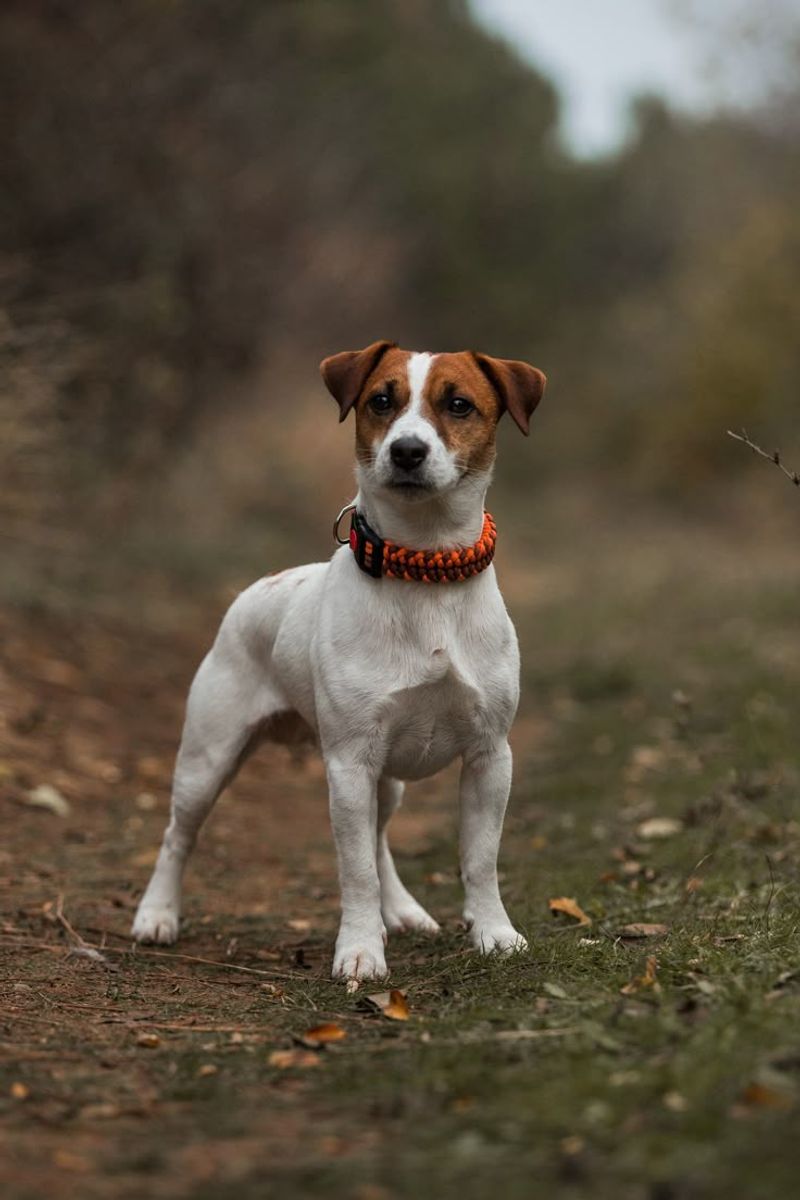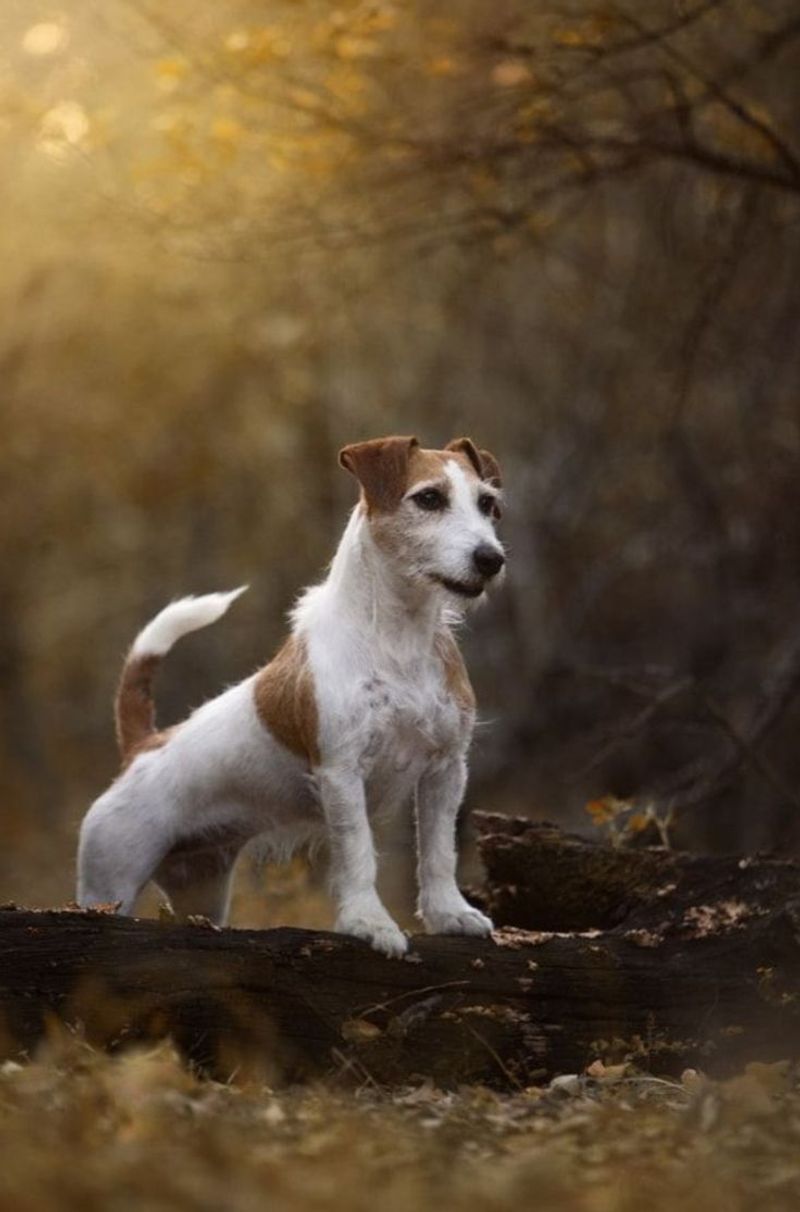Jack Russell VS. Parson Russell: 10 Surprising Differences You Need To Know

When it comes to small terriers, the Jack Russell and Parson Russell often cause some confusion. These energetic little dogs both have a lot to offer, yet they are distinct in several fascinating ways.
If you’re considering welcoming one of these spirited companions into your home, understanding their differences could help you make the best choice. From size and personality to history and purpose, let’s unravel the quirks that set them apart.
1. Size and Body Structure

Size is where the first clear distinction is found. While both breeds are small, the Parson Russell is typically a tad taller, standing between 12 to 15 inches at the shoulder. In contrast, the Jack Russell tends to stand between 10 to 12 inches. This difference, albeit slight, can be significant if space is a concern.
The Parson Russell also leans towards a more squared body shape, whereas the Jack Russell often sports a longer body with a more rectangular silhouette. Beyond mere aesthetics, these differences influence their agility and how they tackle varied terrains during hunts or play.
Both breeds share a muscular build designed for action, but the Parson Russell’s longer legs give it a slight edge in speed. So, if a sprinter is what you’re after, lean towards the Parson.
2. Coat and Grooming

The coat is another area where these terriers part ways, offering different grooming needs. Jack Russells come with three coat types: smooth, broken, and rough, requiring varied grooming techniques. On the other hand, Parson Russells primarily sport a smooth or broken coat, simplifying their grooming routine slightly.
A Jack Russell with a rough coat may need more frequent grooming sessions to keep its coat tangle-free and tidy, whereas a smooth-coated variant is relatively low maintenance. Parson Russells, with fewer coat variations, are easier for those less inclined to frequent grooming.
Despite these differences, both breeds are known for their resilience and ability to maintain their coats with minimal fuss. Regular brushing is usually sufficient to keep these terriers looking sharp and feeling comfortable.
3. Temperament and Personality

Personality is where these breeds shine with individuality. Jack Russells are famously energetic and mischievous, often entertaining themselves with creative antics. They are the terrier’s terrier, always ready for action and adventure, which makes them a joy for active households.
Parson Russells, while equally active, often showcase a more measured approach to life. Their temperament can be slightly calmer, making them better suited for homes that appreciate occasional relaxation.
Both breeds are intelligent and require mental stimulation, but their energy levels can differ. If hyperactivity isn’t your cup of tea, a Parson might suit you better. Either way, prepare for a bundle of joy with both breeds.
4. Training and Intelligence

Both breeds boast high intelligence, but their training can take diverse paths. Jack Russells are notorious for their independent streaks, sometimes making training a test of patience. Consistency and a firm, yet gentle, approach is necessary.
Parson Russells, while also smart, might demonstrate a tad more willingness to please during training sessions. This difference can be crucial for first-time dog owners or those less experienced with terriers.
Engaging activities and varied routines are essential, as boredom can lead to destructive behaviors. Whether tackling an agility course or mastering obedience commands, these terriers revel in challenges, thriving on mental and physical stimulation.
5. Purpose and Origin

Dive into their history, and you’ll find roots deeply embedded in fox hunting. The Parson Russell was specifically developed by Reverend John Russell for fox hunting, with a focus on stamina and endurance over varied terrains.
While Jack Russells share this heritage, their purpose evolved over time. They became more versatile, adapting to various hunting and companion roles beyond the chase, making them the more common household pet.
The historical divergence has helped shape their modern personas, with Parson Russells retaining more hunting instincts. This makes them excellent for those still interested in field sports, whereas Jack Russells are often happier as lively companions in diverse environments.
6. Energy Levels and Exercise Needs

Both breeds demand high energy expenditure, but there are nuances. Jack Russells are known for their boundless energy, often bouncing off the walls with enthusiasm. This trait makes them ideal for families eager to engage in daily adventures.
Parson Russells, while energetic, may display slightly more restraint. Their exercise needs remain high, but they might not match the Jack Russell’s endless zest. This distinction can be crucial for those considering their lifestyle compatibility.
Daily walks, interactive play, and mental challenges are necessities for both breeds. Neglecting this can lead to pent-up energy manifesting in less desirable ways. Both require dedicated time for physical exertion.
7. Adaptability and Living Conditions

Living conditions also play a role in distinguishing these breeds. Jack Russells, with their adaptable nature, can thrive in a variety of environments, from apartments to country homes. However, their energy demands require substantial outlets.
Parson Russells, with a preference for more open spaces, might fare better in homes with access to a yard or countryside. Their slightly larger size and vigor align well with expansive settings.
Despite these preferences, both breeds can adapt to different living conditions given the right exercise and engagement. Owners must ensure they meet their terrier’s needs to maintain harmony within the household.
8. Health and Lifespan

Both terriers generally enjoy robust health, yet some differences exist. Jack Russells often boast a longer lifespan, averaging 13 to 16 years, while Parson Russells generally live between 12 to 15 years. These differences, though minor, can matter to prospective owners.
Health issues such as patellar luxation and eye disorders can affect both, but the prevalence varies. Regular vet checkups and a healthy lifestyle can mitigate many potential problems.
Their overall resilience and vitality mean both breeds usually enjoy a long, active life. Owners should prioritize regular health checks and maintain an active routine to keep them sprightly and healthy throughout their years.
9. Socialization and Behavior with Others

Social butterflies or lone wolves? When it comes to socialization, both breeds benefit greatly from early exposure to diverse environments and characters. Jack Russells, with their lively natures, often enjoy mingling with people and pets.
Parson Russells also appreciate socialization, though their initial interactions might be more reserved. They tend to warm up quickly, becoming affectionate companions.
Both breeds thrive on positive encounters, and owners should facilitate varied experiences to nurture well-rounded dogs. Their sociable natures make them popular in community settings, provided their energetic tendencies are managed appropriately.
10. Popularity and Cultural Impact

In the realm of fame, both breeds have made their mark. Jack Russells, with their charismatic and bold personalities, often steal the spotlight in movies and television. Their energetic antics and charming looks make them a favorite among filmmakers.
Parson Russells, while less common in the media, are celebrated in dog shows, often showcasing their elegance and agility. Their refined appearance and capable nature draw attention in competitive arenas.
Culturally, both breeds embody the spirited essence of terriers, charming their way into hearts worldwide. Whether as the star of a silver screen or the pride of a dog show, their impact is undeniable and enduring.
